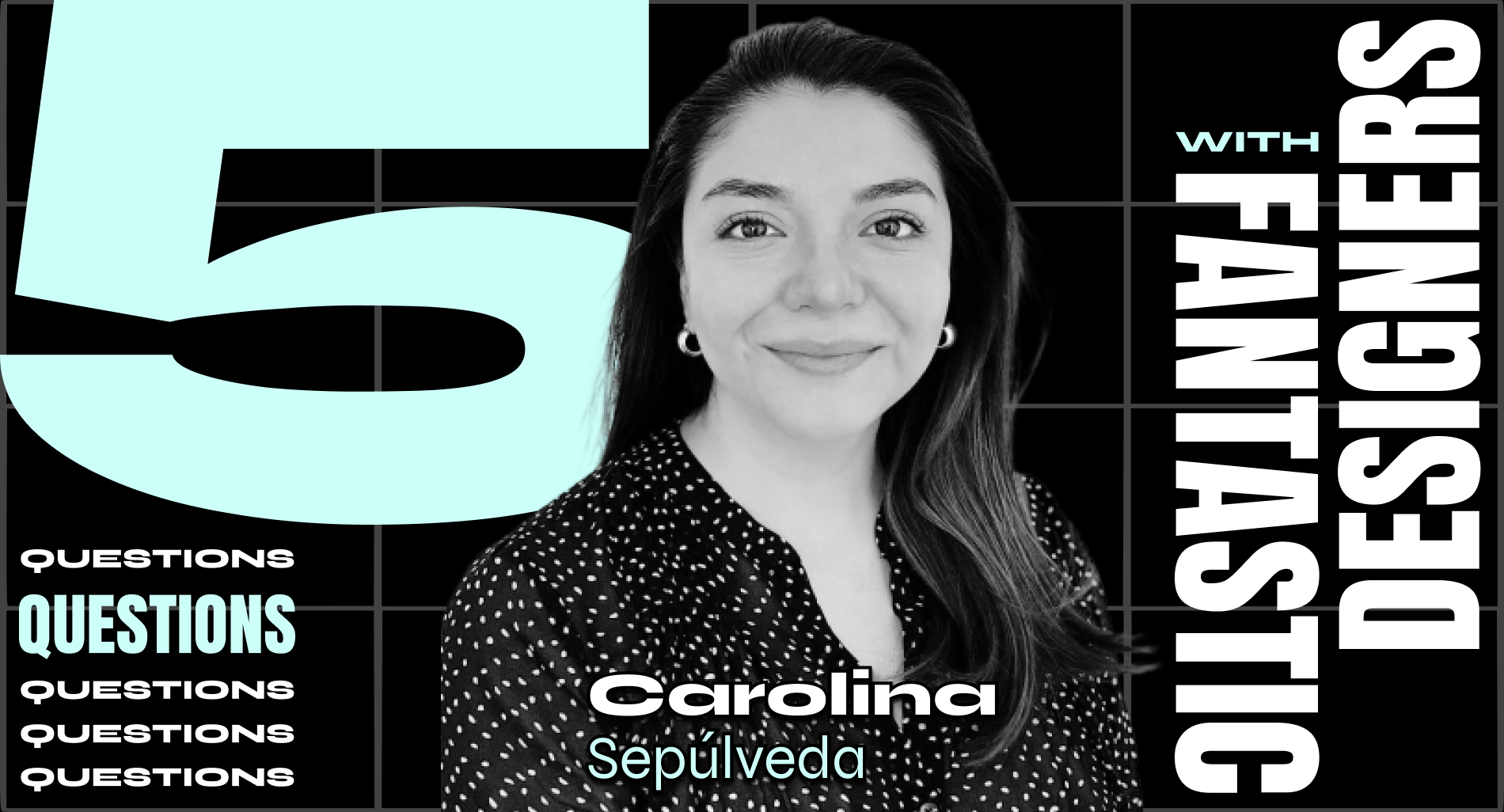Carolina Sepúlveda is a Partner and Director of Experience at the consulting firm 2Brains with a team of over 120 people. She is a designer, has a Master’s in Business Administration, passionate about people-focused experience design, a lover of communities and collective learning. She is the Academic Director of the Diploma in User Experience Design for Digital Products (DUX) at the Catholic University of Valparaíso, Chile. Co-founder and Director of “+Mujeres en UX”, the first Latin American community of women in user experience.
1. What design trends do you think will take off this year and more in the future?
We are witnessing a revolution caused by the expansion of artificial intelligence, which is catalyzing a movement towards the essential. This change requires design teams to genuinely focus on the problems, needs, and strategies to address. Cultivating critical thinking, as well as adopting strategic and systemic perspectives, will be fundamental. The effective integration of artificial intelligence tools will become a cornerstone for improving workflow efficiency and for optimizing methodologies in design implementation, leveraging AI capabilities in the daily activities of teams.
This advancement will not only increase efficiency in conventional design processes but will also encourage evolution in other areas of design. For example, gestural design, which plays a crucial role in human interaction with new virtual reality devices, will be strengthened. It will also be complemented by the “voice first” trend, prioritizing conversational interfaces over visual interfaces, adapting to emerging forms of technological interaction.

2. When it comes to making design and the design industry more diverse, equal, and inclusive, what changes are needed or would you like to see?
At 2Brains, we have been promoting digital accessibility in Latin America for several years, integrating it as an essential element in our work process and promoting it as a key competency within our user experience team. We are convinced that the design and development of digital products must be inclusive and accessible to all people. Digital accessibility is not an accessory; it is a fundamental right that allows all people to access information, products, and services. To reinforce this right, it is imperative that Latin American countries implement stricter legislation, aligning with the guidelines of the United States and Europe. This commitment must extend beyond the quality of the products and services offered; it must include the integration of diversified design teams, the promotion of empathetic leadership, and the adoption of long-term visionary strategies that place digital accessibility at the core of technological innovation.
We still have a long way to go in improving and learning in the field of digital accessibility as an organization, but we are convinced that we are heading in the right direction. As designers, it is imperative to continue promoting inclusivity in our work. Additionally, I want to highlight the exceptional work of visibility and training carried out by the Latin American accessibility community, which has prominent leaders such as Olga Carreras, Susana Pallero, Pipi Marquez, Consuelo Correa, Carolina aguilera, Mónica Duhem, among others, who are leading this change movement, which must continue to grow.

GAAD celebration event organized by 2Brains
3. What are 3 things you were not taught in school (if you were formally trained in design) that you wished you had been taught?
The value of mistakes: During my design studies at the University of Chile, I lived in an academic environment where mistakes were severely criticized. However, upon entering the technological workforce, I quickly understood the immense value of making mistakes and the enriching learning that follows. Far from being a punishment, the mistake became an invaluable source of empirical knowledge.
Living design: The importance of releasing the product, allowing it to evolve as a living entity that exists to serve people. This meant understanding that the result of my work was not my personal property or an immutable piece of art, but something that, by its very nature, must adapt and transform according to its purpose.
We need business and development: Design alone is not enough. Technical feasibility and commercial viability are fundamental to the relevance and impact of a product. Recognizing the importance of collaborating closely with business and development teams has been key to achieving a real and positive impact on people’s lives. This integrative approach is essential to create technological solutions that truly make a difference.
4. What are the biggest challenges you’ve had to face as a designer? Did you overcome them? How?
Entering the world of technology was initially challenging, especially because of the masculinized work environment. The scarcity of women in leadership positions limited my references to follow, and the visibility of women in academia, companies and organizations in our industry was minimal. This context generated in me a persistent sense of discomfort.
In response to this situation, along with my friend and colleague Mariana Valenzuela Silva, a journalist specialized in User Experience, we decided to take action to change this reality. That’s how we created +Women in UX, the first Latin American community dedicated to increasing the visibility of women in Design, User Experience, and Technology, promoting networking and knowledge exchange. Currently, our community has a presence in 8 countries, with more than 100 active volunteers and gathering more than 3000 participants annually. Thanks to this initiative, we have managed to transform the environment for women in our field, providing opportunities for professional growth through the support of female references who are truly powerful and inspiring.

+Mujeres en UX Chile Meeting
5. Why do you think design matters?
Design matters because it is a forward-looking discipline, with the unique ability to shape and configure the future. In this sense, those of us dedicated to design not only have a professional task but also bear a deep social, moral, and ethical responsibility in all our actions. The act of designing is, essentially, a political act that grants us significant power, which we must wield responsibly. Our goal should be to contribute positively, make people’s lives easier, and foster a better future as agents of change. This involves constantly reflecting on the impact of our work on the environment, communities, and marginalized groups, avoiding perpetuating biases, discrimination, and injustices. Our mission is to use design as a tool for good, promoting sustainable and inclusive development that benefits the entire society.
* * *
Do you want to hear more from Carolina? She gave a talk at the digital design conference Design Matters Mexico 24, which took place in Mexico City & Online, on Jan 31- Feb 1, 2024. Along Fernanda Zúñiga and Pamela Armstrong, her talk, titled “AI & UX: designing an ethically aware future, explored the fusion between Artificial Intelligence and User Experience, redefining how to create digital interfaces powered by this technology, but from a responsible perspective. Join DesignMattersPlus.io and watch their talk!
Connect with Carolina on LinkedIn or follow Más Mujeres en UX LATAM on Instagram.




